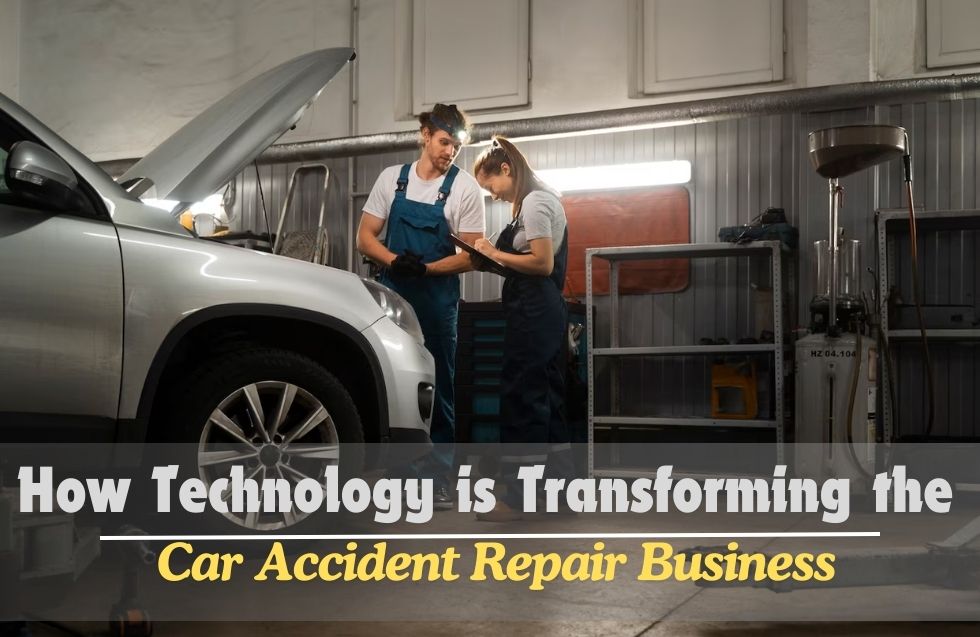In today’s rapidly advancing world, technology is reshaping every industry, including the car accident repair business. As vehicles become more advanced, the tools, processes, and expertise required to repair them are evolving as well. Technology is not only speeding up the repair process, but it’s also enhancing accuracy, customer service, and legal and insurance handling after accidents. In this blog, we’ll explore how cutting-edge technology is transforming the car repair industry, improving efficiency, accuracy, and customer satisfaction.
1. Artificial Intelligence for Damage Assessment
Traditionally, assessing the damage after a car accident relied on the keen eye of an expert mechanic or insurance adjuster. Now, artificial intelligence (AI) is making this process faster and more accurate. With AI-driven apps, car owners can simply take photos of the damaged vehicle and submit them to their insurance company. The AI system analyzes the photos to determine the extent of the damage and provides an estimate for the repairs. This minimizes human error and speeds up the repair process.
2. 3D Printing for Car Parts
One of the most significant technological advancements in the car repair industry is the use of 3D printing to manufacture car parts. When an accident occurs and certain parts of a vehicle are damaged, waiting for parts to be shipped can delay repairs. With 3D printing, body shops can now create custom parts on-site. This technology drastically reduces the time required to get a car back on the road, lowers the cost of production, and allows for greater flexibility in sourcing hard-to-find parts.
3. Augmented Reality for Training and Repairs
Augmented reality (AR) is enhancing both the training of mechanics and the repair process itself. With AR tools, technicians can visualize detailed 3D models of a car’s interior components overlaid on the actual vehicle. This helps them locate and fix problems more quickly. For example, AR glasses can guide mechanics through complex repairs by providing step-by-step instructions right in front of their eyes. This minimizes the risk of mistakes and improves the overall efficiency of the repair.
4. Robotics and Automation in Repair Shops
The introduction of robotics in car repair shops is transforming the way technicians handle repetitive tasks. Robotic systems are capable of performing jobs like dent removal, painting, and polishing with precision and consistency. Automated paint booths, for instance, ensure that vehicles receive a flawless finish every time, reducing labor costs and increasing the speed of service. This technology allows human workers to focus on more intricate tasks, further improving productivity.
5. Telematics and Remote Diagnostics
Modern cars are equipped with telematics systems that collect real-time data about the vehicle’s condition. This technology is now being leveraged in the repair business to conduct remote diagnostics. After an accident, repair shops can access the vehicle’s data to determine the exact cause and extent of the damage without having to manually inspect the car. This leads to quicker and more accurate diagnoses, allowing shops to order the correct parts and streamline repairs.
6. Automated Claims Processing
The car repair business is closely linked with insurance companies, and technology is making claims processing more efficient. Automated claims management platforms are helping insurance companies and repair shops communicate seamlessly. These systems can automatically assess repair costs, handle documentation, and even schedule repairs. This reduces administrative burdens and ensures that customers can get their vehicles repaired faster with fewer complications.
7. Car Accident Insurance Lawyers and Technology
While technology has simplified many aspects of car accident repairs, navigating the legal and insurance complexities still requires expert guidance, especially after a serious collision. Car accident insurance lawyers play a critical role in ensuring that drivers get fair compensation and that the claims process proceeds smoothly.
- Maximizing Compensation: Lawyers can help victims understand their rights and the compensation they are entitled to after an accident. Insurance companies often use sophisticated software to minimize payouts, but accident lawyers can counteract these tactics by using technology and data to build stronger cases.
- Managing Complex Claims: In some cases, determining liability can be complex, particularly if multiple parties are involved. Accident insurance lawyers use technology to gather digital evidence from telematics data, dash cams, and even GPS logs to ensure an accurate depiction of the accident. This can be invaluable in negotiating with insurance companies.
- Streamlining Communication: Many law firms specializing in car accident cases now use case management software that integrates with insurance companies and repair shops. This ensures smooth communication, reduces paperwork, and allows clients to stay updated on the status of their claim in real-time.
8. Electric and Hybrid Vehicle Specialization
As electric and hybrid vehicles become more popular, repair shops are adapting by learning to service these eco-friendly vehicles. Electric vehicles (EVs) have different repair needs compared to traditional cars, especially when it comes to their battery systems. Specialized diagnostic tools and training are required for technicians to safely repair and maintain EVs. As a result, many shops are investing in technology and training to stay ahead of the curve.
9. Blockchain for Secure Repair Documentation
Technology like blockchain is also finding its way into the car accident repair business, particularly in managing and securing repair records. Blockchain technology provides a tamper-proof ledger of a vehicle’s repair history, making it easier for buyers, sellers, and insurers to verify past work. This can be crucial in determining the resale value of a vehicle and ensuring that all repairs have been properly documented.
10. Mobile Apps for Customer Convenience
Customer expectations are also shaping how technology is used in the repair process. Mobile apps are transforming the way customers interact with repair shops. With just a few taps, customers can schedule repairs, receive real-time updates on the progress of their vehicle, and even approve repair estimates remotely. These apps improve transparency and communication, making the entire experience more convenient for the customer.
Conclusion
The car accident repair business is undergoing a tech-driven transformation that is benefiting both repair shops and customers. From AI-powered damage assessments to 3D printing, AR-enhanced training, and telematics, technology is making repairs faster, more accurate, and more cost-effective. As vehicles continue to evolve, so too will the tools and technologies used to repair them, ensuring that the industry stays at the cutting edge of innovation.
By embracing these advancements, the car repair industry is not only improving operational efficiency but also enhancing customer satisfaction, making it easier than ever to get back on the road after an accident.












